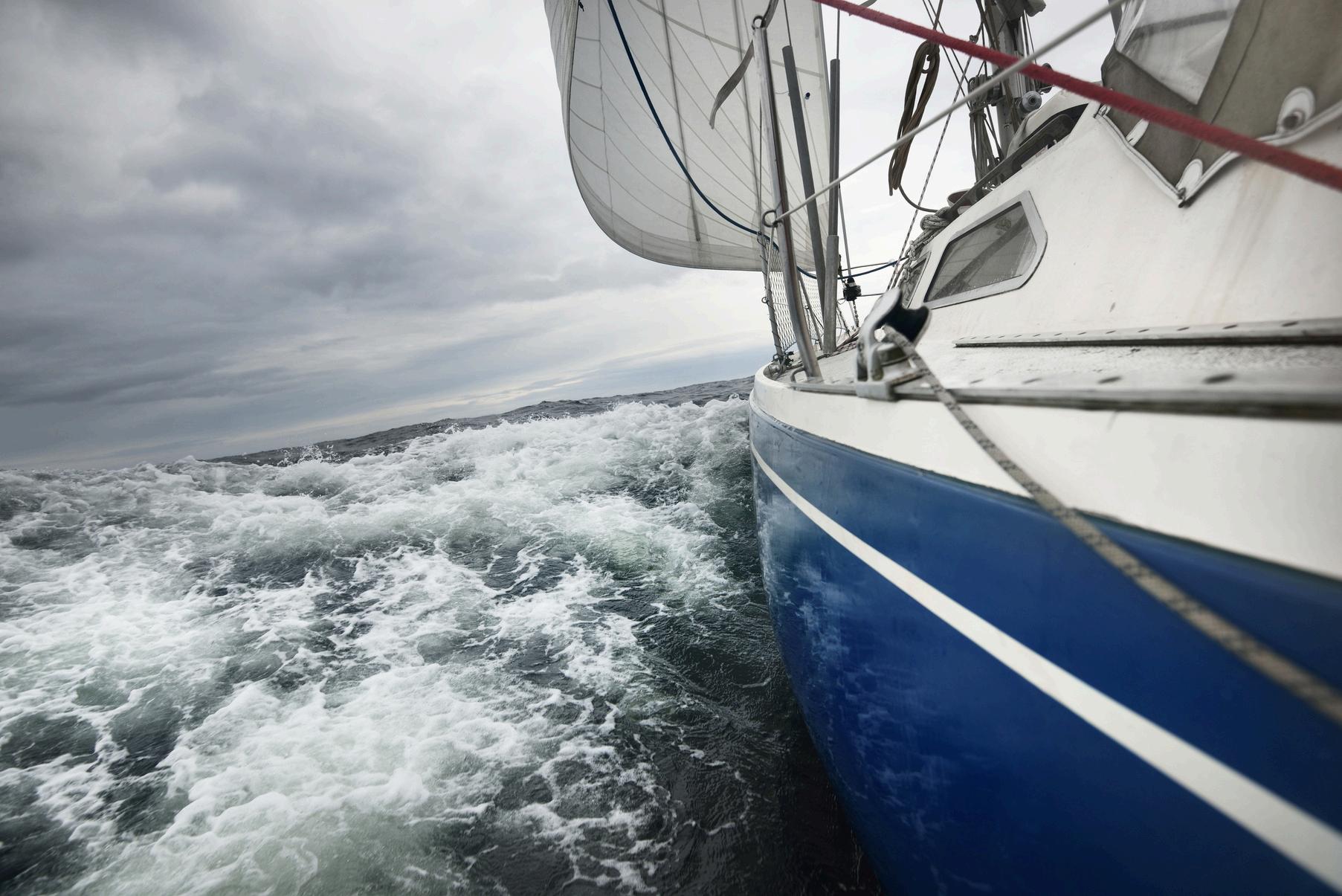
3 minute read
BOATING GONE BAD
by theensign
Man overboard training prevents Great Lakes race tragedy
BY ROBERT A. BUCHANAN
►In July 2024, a horrible, unthinkable tragedy was avoided during Chicago Yacht Club’s 115th Race to Mackinac thanks to satellite technology, superb seamanship, and a well-schooled, tautly disciplined crew.
The Grand Prix of sailboat racing, the Chicago race is considered one of the world’s most arduous because lakes Michigan and Huron stretch north to south, but the Great Lakes’ weather moves west to east.
In the dark, stormy hours of Saturday night, July 13, with winds up to 40 knots, a crewmember on Callisto went to bring down the spinnaker sail Heavy winds can rip a spinnaker or worse if the spinnaker goes underwater, the scooped-up weight of the water can push the boat flat on its side A huge wind gust jolted the boat and knocked the untethered crewmember overboard into the violent nighttime Lake Michigan waters.
Each crewmember must wear a self-inflating life jacket with a waist pack containing an Automatic Identification System or GPS receiver. This wateractivated satellite system instantly transmits a man overboard signal visible on the receiving screen of every other boat. The pack also has a waterproof radio, whistle and lights.
The 52-foot Santa Cruz Madcap was in the best position to approach the crewmember in the water. When a crewmember saw the man overboard signal on their receiver, the Madcap crew leapt into action.
As a result of crew training, discipline and technology, the rescue took 20 minutes from activation of the man overboard alert to the crewmember being safely aboard the rescuing boat.
Finding the victim was easy; his lights shone like a Christmas tree Sails were dropped, the diesel started, and Madcap circled back to throw a Lifesling into the water with a line attached Madcap then circled so the man in the water could be “lassoed” Each person knew their job: the spotter who kept his eyes on the crewmember, the search light operator, the Lifesling crewmember. The most experienced helmsperson took the wheel.
Bringing a person aboard by way of a swim platform can be dangerous due to the sharp rudder and propeller; a propeller strike on the leg could sever an artery. To be safe, the Madcap crew used a bosun’s chair to hoist the person up over the side with a halyard and winch Once the crewmember was safely on board Madcap, Callisto and Madcap skippers decided that returning him to Callisto was too dangerous, so he continued on Madcap as a guest as both boats finished the race.
As a result of crew training, discipline and technology, the rescue took 20 minutes from activation of the man overboard alert to the crewmember being safely aboard the rescuing boat.
Three other boats lost their masts in the horrific Lake Michigan weather conditions. This could have been tragic if the carbon fiber loose masts had penetrated a fiberglass hull.■
About The Author
Robert Buchanan has sailed offshore for years and always holds a man overboard briefing prior to getting underway.
A VERSION OF THIS ARTICLE ORIGINALLY APPEARED IN THE PORTHOLE NEWSLETTER OF ANN ARBOR SAIL & POWER SQUADRON/9.










